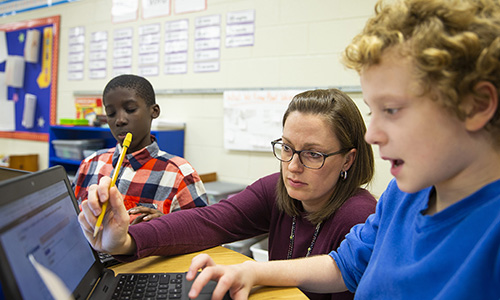
Welcome back to our blog series on formative assessment.
We’ve introduced the Popsicle Stick method and the Exit Ticket, two great ways to involve all students and get the information you need to make adjustments to your teaching. Ideas like these have been proven to increase student learning.
Ready for our third idea? It’s called the Whiteboard.
A simple way to hear every voice
The Whiteboard technique can engage your entire class and provide helpful evidence of student learning.
Your students can use their whiteboard to provide an answer or information by simply writing their idea down and raising their board so you can read it.
Every student will need a small whiteboard at their desk. Luckily they’re fairly inexpensive and can even be found at your local dollar store.
Your students can use their whiteboard to provide an answer or information by simply writing their idea down and raising their board so you can read it. That makes it easy for you to quickly grasp student understanding and adjust how you move forward.
A tablet can act in a similar fashion. But, as Dylan Wiliam said, “The greatest modern invention for learning might well be the personal whiteboard.” Whatever you use, just remember: It doesn’t have to be fancy. As long as you’re able to solicit evidence of student understanding and comprehension of the lesson at hand, the technique has done the trick.
Learn more
Get more formative assessment tips and tricks in our e-book “Making it work: How formative assessment can supercharge your practice.”




